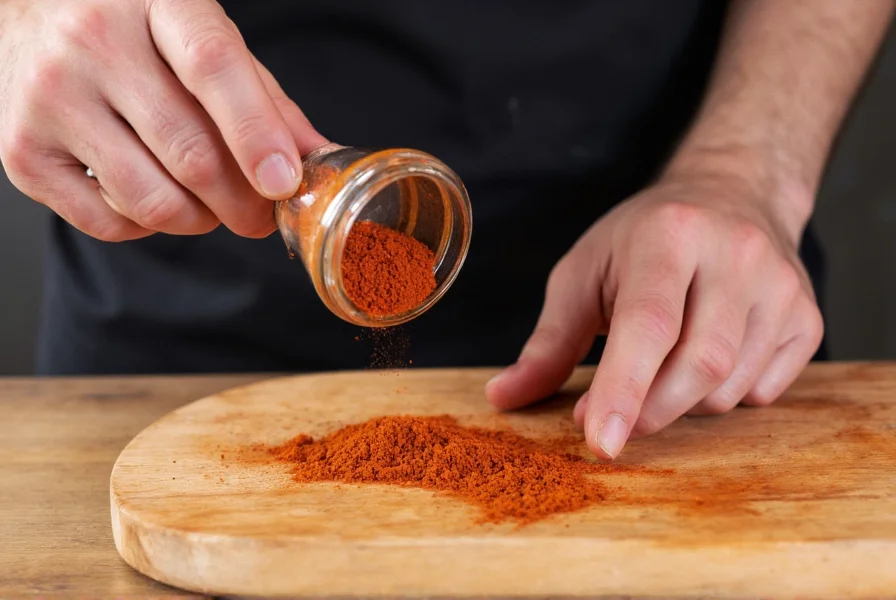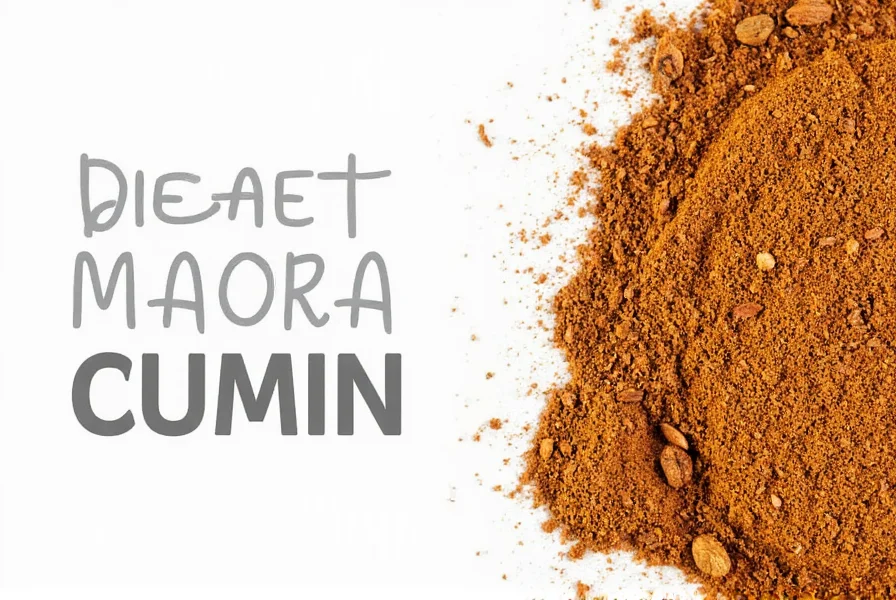Running out of cumin mid-recipe doesn't have to ruin your cooking experience. As a professional chef with two decades of culinary experience, I've tested numerous cumin alternatives across global cuisines to provide you with practical, reliable substitutions that maintain your dish's integrity. Understanding cumin's earthy, warm, slightly citrusy flavor profile is key to selecting the right replacement.
Why Cumin Matters in Your Cooking
Cumin brings a distinctive earthy warmth with subtle citrus notes and a hint of bitterness that's essential in many global cuisines. This spice contains cuminaldehyde, which gives it that characteristic aroma. When you're searching for what spice can replace cumin in your recipe, you're really looking for alternatives that can mimic this complex flavor profile without throwing off your dish's balance.
Top Cumin Substitutes Ranked by Effectiveness
Not all substitutes work equally well across different cuisines. Here's how various alternatives perform based on extensive kitchen testing:
| Substitute | Best For | Substitution Ratio | Flavor Match |
|---|---|---|---|
| Chili Powder | Mexican, Tex-Mex dishes | 1.5 tsp per 1 tsp cumin | ★★★★☆ |
| Garam Masala | Indian, Middle Eastern recipes | 1 tsp per 1 tsp cumin | ★★★★☆ |
| Coriander | General purpose, milder dishes | 1 tsp per 1 tsp cumin | ★★★☆☆ |
| Paprika + Oregano Blend | Mediterranean, Spanish cuisine | 1 tsp blend per 1 tsp cumin | ★★★☆☆ |
| Taco Seasoning | Tacos, burritos, chili | 1.5 tsp per 1 tsp cumin | ★★★☆☆ |
Cuisine-Specific Cumin Alternatives
The best cumin replacement in Indian recipes differs from what works for Mexican food. Understanding these nuances prevents flavor disasters:
Mexican and Southwestern Dishes
For chili, tacos, or enchiladas, chili powder makes the most effective best cumin substitute for chili. Most commercial chili powders already contain cumin, making them ideal replacements. Use 1.5 teaspoons of chili powder for every teaspoon of cumin called for. If making your own blend, combine 1 teaspoon paprika, ½ teaspoon garlic powder, ¼ teaspoon oregano, and ¼ teaspoon cayenne.

Indian and Middle Eastern Recipes
When cooking curries or tagines, garam masala provides the closest flavor profile as a cumin alternative for Mexican food won't work here. Use equal parts garam masala to replace cumin. For more control, create a custom blend: 1 teaspoon coriander, ½ teaspoon turmeric, ¼ teaspoon cinnamon, and a pinch of cardamom. This combination mimics cumin's earthiness while complementing other spices in the dish.
Mediterranean and Spanish Cuisine
For paella or Greek dishes, combine equal parts smoked paprika and dried oregano. The paprika provides earthiness while oregano adds the herbal note cumin contributes. This cumin spice replacement ratio works best at 1 teaspoon of the blend per teaspoon of cumin.
What NOT to Use as Cumin Substitutes
Many online sources suggest inappropriate substitutes that will ruin your dish. Avoid these common mistakes:
- Cinnamon alone - too sweet, lacks earthiness
- Cumin seeds instead of ground - different flavor release and texture
- Curry powder as direct substitute - contains turmeric which changes color dramatically
- Caraway seeds - similar but more intense anise flavor that dominates dishes
Creating Your Own Cumin Substitute Blend
For the most reliable results when you're wondering no cumin what to use instead, make this versatile blend:
Universal Cumin Substitute Blend
Mix together: - 2 tablespoons ground coriander - 1 tablespoon smoked paprika - 1 teaspoon garlic powder - 1 teaspoon dried oregano - ½ teaspoon turmeric
Store in an airtight container for up to 3 months. Use 1.5 teaspoons of this blend to replace 1 teaspoon of cumin. This combination works across most cuisines and provides the earthy depth cumin contributes without overwhelming other flavors.
Adjusting Recipes Based on Your Substitute
When using cumin alternatives for Mexican food or other cuisines, remember these adjustment tips:
- Add substitutes early in cooking for maximum flavor integration
- Taste and adjust seasoning after 10 minutes of simmering
- For chili recipes, add a pinch of cocoa powder with your substitute to enhance earthiness
- If using coriander as your main substitute, increase garlic content slightly to compensate for missing depth
When Substitutes Won't Work: Dishes That Require Real Cumin
Some recipes absolutely require authentic cumin. These include:
- Authentic adobo seasoning
- Traditional berbere spice mix
- Certain mole recipes
- Specific regional Indian dishes like jeera rice
For these specialty dishes, consider making a quick trip to the store rather than substituting, as the unique flavor profile is integral to the dish's identity.
Storing Cumin Properly to Avoid Running Out
Prevent future cumin spice replacement emergencies by storing your cumin correctly. Keep ground cumin in an airtight container away from light and heat. Properly stored, it maintains peak flavor for 6-12 months. For longer shelf life, store whole cumin seeds and grind them as needed using a spice grinder or mortar and pestle.
Can I use coriander instead of cumin in chili?
Yes, you can use coriander as a cumin substitute in chili, but use 1.25 teaspoons of coriander for every teaspoon of cumin called for, and add a pinch of smoked paprika to compensate for the missing earthiness. Coriander provides a similar citrus note but lacks cumin's depth, so this adjustment creates a more balanced flavor profile.
What's the best cumin substitute for Indian recipes?
Garam masala is the best cumin substitute for Indian recipes, using a 1:1 ratio. If unavailable, create a blend of 1 teaspoon coriander, ½ teaspoon turmeric, ¼ teaspoon cinnamon, and a pinch of cardamom. This combination mimics cumin's earthy warmth while complementing other spices in Indian cuisine without altering the dish's essential character.
Is chili powder a good replacement for cumin?
Chili powder makes an excellent cumin replacement in Mexican dishes, using 1.5 teaspoons of chili powder for every teaspoon of cumin. Most commercial chili powders already contain cumin as a primary ingredient, making them ideal substitutes. However, avoid using chili powder as a cumin substitute in Indian or Middle Eastern recipes, as it will introduce unwanted heat and flavor elements.
Can I skip cumin entirely in a recipe?
Skipping cumin entirely will noticeably change your dish's flavor profile, especially in recipes where it's a primary spice. If you must omit it, increase other earthy spices like paprika or add a pinch of cocoa powder to maintain depth. For best results when you're asking what can I substitute for cumin spice, use one of the recommended alternatives rather than omitting the spice completely.
How do I make my own cumin substitute blend?
Create a versatile cumin substitute by mixing 2 tablespoons ground coriander, 1 tablespoon smoked paprika, 1 teaspoon garlic powder, 1 teaspoon dried oregano, and ½ teaspoon turmeric. Store in an airtight container for up to 3 months. Use 1.5 teaspoons of this blend to replace 1 teaspoon of cumin. This combination works across most cuisines and provides the earthy depth that cumin contributes to recipes.











 浙公网安备
33010002000092号
浙公网安备
33010002000092号 浙B2-20120091-4
浙B2-20120091-4